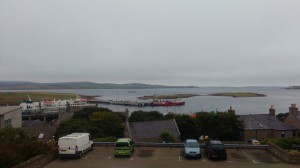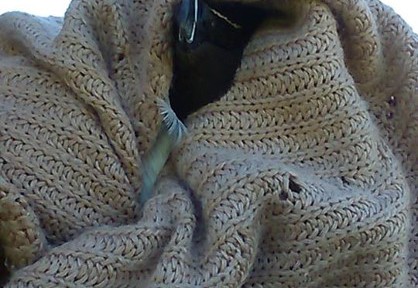
August has definitely been less manic than July and I have even managed to spend some time reading literature. Something I have definitely not had time for. I travelled to Aberdeen to meet Richard, one of our Natural Network trainees, to see what he has been getting up to. We had beautiful weather and even managed a trip to the beach near the Torry battery. This gave me a chance to talk about my work with Non-Natives. The day ended with us embarking on a rescue mission of an injured Razorbill. Not a great picture as he is well hidden in my jumper.
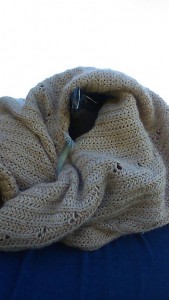
Next I was back at the North Berwick Seabird Centre. This time around it was much busier. The kids and I made wanted posters for Marine Non-Natives and some badges. We even looked at the zooplankton stages of crabs, barnacles, tunicates and sea anemones . I had games provided by the Highland Seashore Biodiversity Project and the Non Native Species Secretariat to give away along with some pens provided by MASTS and leaflets on the Check-Clean-Dry Campaign. All in all it was a great day!
After such a successful day at the seabird centre I was eager to organise more outreach opportunities and with the support from John I organised a meeting with the Inner Forth Landscape Initiative. This Initiative is funded by the Heritage Lottery Fund until 2018. Its aim is to increase access to the area, bring communities together and encourage their participation, increase training, local opportunities and promote the conservation and restoration of the area.Together we are hoping to organise some rocky shore ID days for the summer of 2016.
More information can be found at http://www.innerforthlandscape.co.uk.
Lastly, I was very fortunate this month to join some of the UK’s top algal specialists at the Marine Station in Millport at the end of the month. Our goal was to create full species lists of 3 beaches on Cumbrae. With a wealth of experts congregated together it was sure to an impressive list and it was! Our second beach alone totalled 103 different species of algae! This included microscopic, epiphytic and crustose forms! I will be receiving the full species lists soon. As you can see in the picture below, I found a lot of Sargassum muticum, the invasive brown seaweed. In fact, I found it on every beach we visited.
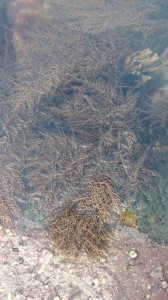
I travelled back up to Orkney where I have one month left in this beautiful set of islands. The weather is definitely colder but the views are just as spectacular. ICIT always has a warm welcome and it doesn’t take long to feel at home here. I was greeted back again as a long lost friend to the campus and I even found my TCV bulletin piece on the wall of the newly refurbished kitchen! There is still lots of refurbishment work underway with many changes happening for the new students who will be arriving soon to begin their studies in Orkney. I hope they enjoy working here as much as I do.
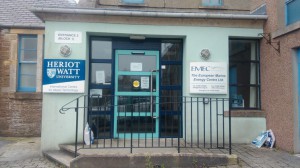
The entrance to ICIT Stromness

